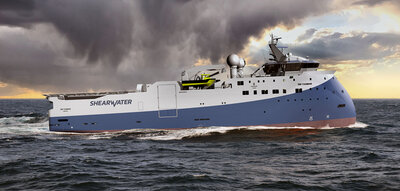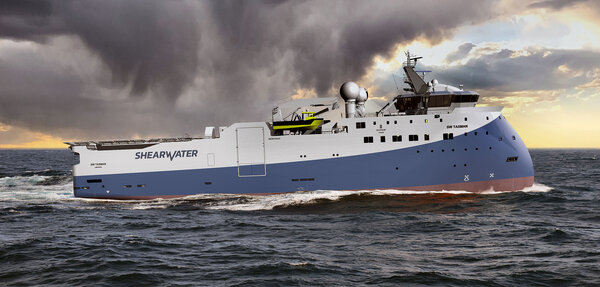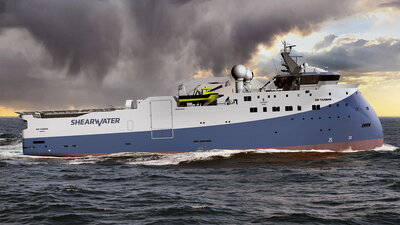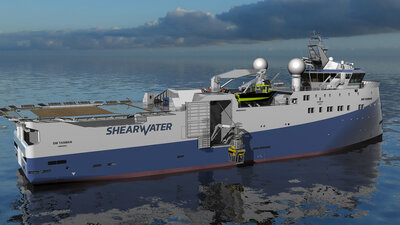They knew what we were talking about from day one. It was a good match.
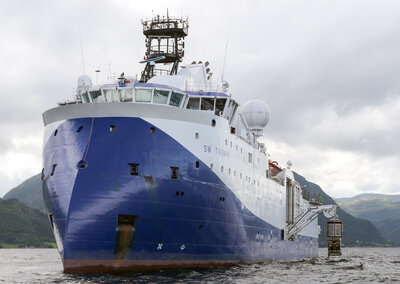
The SW Tasman was originally designed and built as a 12-streamer 3D offshore seismic vessel. In collaboration with Shearwater, Ulstein Design & Solutions carried out redesign and engineering for a dual ROV seismic vessel, the first in the Shearwater fleet. Repurposed to deploy ocean bottom nodes in both deep and shallow water, the vessel is now also able to provide high-quality sources for surveys and conduct towed streamer surveys. This combination is unique in a vessel.
Placing nodes with one vessel only
"The vessel went straight to work after the conversion, and that is a good sign," says Mick Richardson, marine technical manager at Shearwater.
"SW Tasman was contracted to conduct streamer and node surveys using ocean bottom nodes in the Norwegian North Sea. She has also been working for another client, placing nodes off Kristiansund, Norway. All were performed by the SW Tasman only.
The conversion results
"The conversion went really well. I was concerned about how she would operate in dynamic positioning mode, but the performance was really good. We have already seen some choppy weather, and she is well up to what we expected her to be, and above other ROV vessels. We are very happy with how the equipment package has joined together. There are good internal logistics in the upgrade area, which we had placed much focus on. This is a concrete safety issue, having good walkways, access and stairs," states Richardson.
A good match
Through the conversion project, two companies were working together as one team, with feasibility as an overall goal.
"You cannot use anybody to do this. This was not only about making an ROV vessel, but developing a special concept. The vessel is big enough to carry a helideck; she came with an accommodation package, an instrument room, and an enclosed area instead of a containerized area on deck. We knew that this platform is working," says Richardson.
"The ideas came in from all angles, and we had an open, clear dialogue. We added operational knowledge. Ulstein added their knowledge of the vessel type, general design knowledge, stability and capacity characteristics, class rules, ROVs and possible solutions. They knew what we were talking about from day one. It was a good match.
Crew is key. If they're happy, operations go well
If you were to go through a similar conversion project on another vessel, would you choose the same systems and solutions again?
"Definitely, only a bit of filling around the edges. The crew says they are happy with the changes we made, and the vessel is operating well”, Richardson states, stressing:
"Crew is key. If the crew is not happy, we will struggle operationally. But here we hear positive words from everybody.”
